289 Sports > Basketball > In-depth interpretation of the Lakers offense and defense in the new season: operational analysis, tactical collection& advantages and disadvantages
In-depth interpretation of the Lakers offense and defense in the new season: operational analysis, tactical collection& advantages and disadvantages
Have the Lakers gotten better? What kind of game shape are they likely to take? What should we expect from them in the new season?
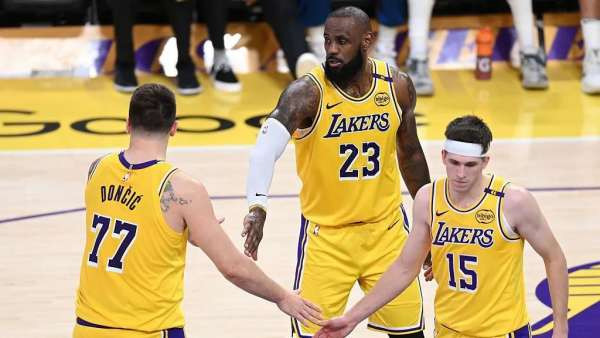
Foreword
For the first time in five years, the Lakers will start the new season without LeBron James or Anthony Davis - which is somewhat strange. But not many people are panicking:
Because Lakers fans know Luka Doncic will lead them going forward.
In the summer, Doncic made an unprecedented investment in physical training, and he lost 14kg of fat. So in the European Championships, we saw a Luka who was in excellent condition and burning with a burning fire of revenge.
He is faster, more athletic, and better physically than last season - and from a "mental" perspective, he is now able to do more on the defensive end and is more of a leader.
Doncic is obviously stronger than last season. And a scary thing is that even the "worst version" of Doncic last season was one of the top four players in the league in EPM (Advanced Integrated Data).
After performing the best performance of his FIBA career in the European Championships, Luka also carried his good form into the preseason - in two games, he scored 28 points in 27 minutes with a three-point shooting rate of 52.6% - and even though he had no tacit understanding with his teammates, he still easily turned the game into a 2K game.
"Luka, who has lost weight, is the Lakers' strongest signing during the offseason." This is no joke.
In the offseason, the Lakers also strengthened their lineup more specifically around him: they added DeAndre Ayton, Marcus Smart, Jake Laravia and Adu Tierro to their roster.
Because the way Luka Doncic arrived was incredible. The first team-building problem the Lakers faced in the "Doncic Era" was that some players in their lineup were not well suited to Luka, but they lacked draft pick assets to reinforce/replace in multiple positions.
This is a nearly unsolvable problem - but the Lakers do have some good luck this offseason.
Who would have thought that the Trail Blazers would directly buy out Ayton after selecting Yang Hansen? The Wizards selected Johnson, traded for Whittemore, and then chose to buy out Smart, which also gave the Lakers a benefit.
In the blink of an eye, there are center pick-and-roll partners, backcourt defenders, and young and athletic forwards. You must admit that Pelinka has achieved the reinforcement goal he set last season to a certain extent. Of course, this is also thanks to Luka's own "attractiveness."
The arrival of these players marks the beginning of the Lakers' gradual "replacement" of the lineup to create a lineup more suitable for playing around Luka Doncic.
You may question the “quality” of the above people. But don't forget that all of these people were obtained through naked signings - the Lakers did not pay any draft pick assets when completing the above reinforcements - this is already much better than we previously expected.
Although Ayton and Smart have their own problems and are in a period of low value, they both have good resumes and are players who are likely to earn back their value; while Laravia is a young player who is on the rise and has good skill adaptability - signing at a low cost [scratching the lottery], while at least ensuring the lower limit of "someone is available" in key positions; and then waiting for the opportunity to obtain a more stable [upgrade] through transactions to fight for the upper limit.
No matter what the final result is, at this time point, the Lake Management team’s idea seems to be right.
Due to the contract structure in the lineup, many people regard this season as a "transitional" season. I won't completely deny this, but I don't think this is a completely "transitional" season - because this team's starting point is not low.
Although Doncic, James, and Reeves are not a trio with a clear division of labor and perfect complementarity, the three of them are not low in terms of positioning as the first, second, and third leaders. They have shown good compatibility in the second half of the regular season last season. The defeat in the playoffs must be "shared" and should not be assigned to the "three cores" first.
Doncic can help the team in the regular season. After James returns, the Lakers will still have outstanding star power in the league (Luka and Xiaoli seem to have become stronger this season). In addition, they have many role players who have proven themselves in the playoffs and have retained the bargaining chip to further complete key upgrades.
Although they are still lacking in some aspects (such as offensive run-in and both offense and defense), and may not be the best team at the beginning of the season, they are not that far away from the first-tier teams - the existence of Luka Doncic is their "emboldenment". If they can build chemistry and help Smart and Ayton regain their value, they have the potential to compete with any opponent -- but what if they add a key piece to the puzzle?
As Robert Pelinka said, they now have a high degree of "flexibility"-the key depends on how the team can play.
And this is exactly the focus of this article.
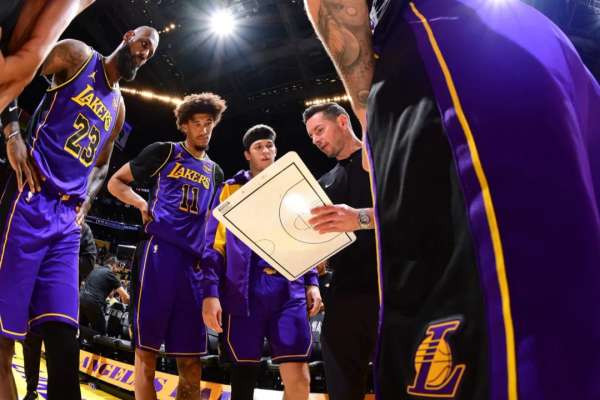
Offensive end
The changes brought to the Lakers by the addition of new blood first appeared on the offensive end.
After the trade last season, the Lakers also played outstanding offenses in stages, but they did not develop their full potential-they have three pick-and-roll core players, but there is only Hayes at the center position.
LeBron, Hachimura, and DFS can certainly serve as screeners, and Reeves can also perform some reverse pick-and-rolls to help the ball holder call out/cut in, but most of these tactics are mainly about creating mismatches, using the three-core containment power to create outside shots/more shots, and creating defensive mistakes..
In the regular season, the personal abilities and golf intelligence of the three cores were enough to help them defeat most teams. Reeves' shooting state at the end of the season also made many things easier - but there were already some signs at that time:
In a small sample, the Lakers were In the absence of Hayes, they struggled against the Celtics' unlimited defense changes and high-quality help defense performance; in a large sample, they were fourth in the league in interior scoring throughout the second half of the season - with LeBron getting older and Luka lacking an interior partner, the Lakers' interior offensive power was seriously insufficient.
But at that time, the record performance continued to rise, making these problems that were only occasionally exposed seem to be "flaws."
Until the Timberwolves completely exposed the problem in the playoffs.
Minnesota has abundant defensive resources. They can not only switch defenses nearly unlimitedly, but also have high-quality assist defense and frame protection. There is no doubt about their defensive discipline - the Lakers suddenly discovered that even if they tried their best, their tactics often ended up being one-on-one singles - and they could not draw fouls.
Randall and Reed were not as easy to deal with as fans thought at first, and Gobert was holding his breath to avenge his shame - the Lakers' five-small lineup did not have the devastating effect they imagined.
What's even worse is that Hayes was able to hold on for 20 minutes in the regular season, but in the playoffs, he was completely shocked and could only sit on the bench. Since then, the Lakers' five small lineups have become their "only lineup" in the true sense.
This ultimately led to the collapse of their physical fitness and rebounding. They fell continuously at critical moments, and finally failed again and again.
The problems exposed by the Lakers in the playoffs are obvious. So during the offseason, they learned from the painful experience and listed the center as their first recruiting target. In the end, he successfully captured DeAndre Ayton.
(However, it is a pity to let go of Finney Smith. This means that the Lakers lost the five-small lineup that was quite capable last season. Now we still don’t know whether using other players as replacements can have the same effect as last season-the answer is probably Negative)
The arrival of Ayton and the departure of Finney-Smith means that the Lakers' offense will return more to the "traditional pick-and-roll core team" route-based on one large and four small players, and the five small players will only be used as a "surprise move" or as a last resort.
So, how to use Ayton well and develop the team's theoretical offensive ceiling around him and the three cores has become one of the most important topics for the Lakers this season.
Although LeBron has not yet played, we can still get a glimpse of some tactical designs in the preseason:
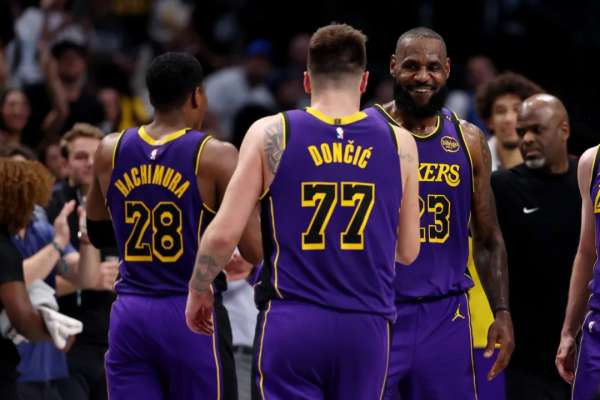
Top-of-the-arc pick-and-roll tactics involving multiple people
Through the Lakers' first two preseason games, we can observe a phenomenon: They used a large number of multiple-person top-of-the-arc pick-and-roll tactics in the game - the frequency even exceeded the ordinary single-block P&R.
It is not surprising that the Lakers would deploy these tactics.
They have three stars who can hold the ball, shoot, attack fixed points, and cut in the air. They are also good at making decisions at the top of the key and in the middle. If only one of them is allowed to play pick-and-roll, and the other two are just spectators outside the three-point line, it would be a waste.
Let’s take a look at the tactics the Lakers used in the preseason based on frequency of occurrence:
“High Ball Screen+P&R”
This was the most common tactic or play style used by the Lakers in Luka’s first game against the Suns.
Before setting a high pick-and-roll with Luka, Ayton will first provide a lateral screen for Reeves/Laravia, allowing them to make an air cut from one side to the other - sometimes "FLare", sometimes "Iverson", Sometimes it's just a back screen that allows them to cut into the penalty area. Frankly speaking, I haven't figured out what the triggering conditions are for their different starting styles, but we can take a look:
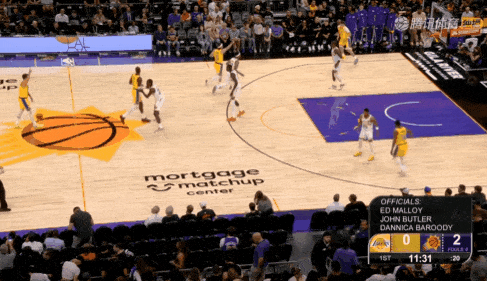
The Lakers' first attack at the beginning was this tactic.
Ayton first set a "Flare" screen for Smart, and then he, Luka, and Xiaoli played a "Stack" - since Ayton's screen hooked the defensive player very well, and Maluach also chose to retreat, Luka directly withdrew a three-pointer in this round.
Of course, this is not the only option for this tactic.
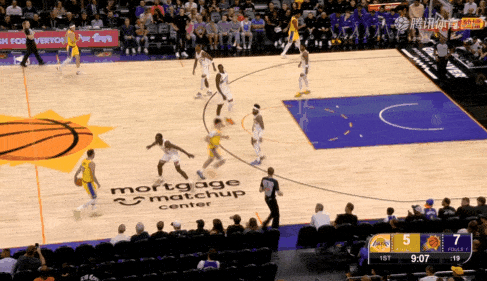
Soon, the Lakers played a similar tactic again - this time Ayton gave Xiaoli an "Iverson cut" screen. The leading defender caught the screen firmly, so Luka passed it directly to Xiaoli, and Xiaoli caught the ball and broke through to face Maluachi and hit a throw.
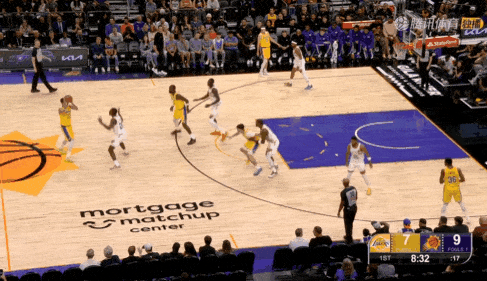
Luka is not only responsible for holding the ball in this tactic - this round is an example. Ayton first acts in the slot (Ayton's screen usually occurs in the slot on one side) to back up Doncic. On the screen, Doncic cut into the basket and attracted Maluac's retreat, but there was no chance to catch the ball. So Ayton immediately stepped forward to screen for Laravia who was holding the ball. He used Maluac's steps back to play a short pick-and-roll and catch the ball in the mid-range.
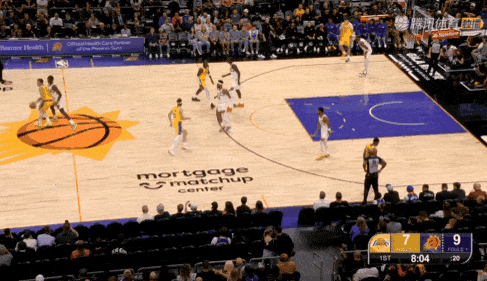
This time, Ayton set up a Flare screen for Xiaoli, and then started a pick-and-roll with Luka. Goodwin's defensive position was more aggressive, so Luka directly passed Xiaoli for a three-pointer.
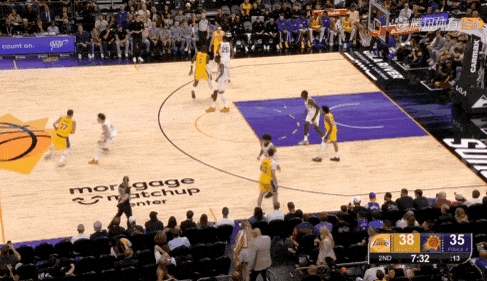
Similarly, Xiaoli can also refuse to cover and cut - once again attracting Maluachi to retreat, Ayton took the opportunity to step forward to pick and roll, and the screen quality was good. Luka entered the middle and used his signature deceleration to use his back to "in jail Dribble" (in jail dribble) of the chasing player, causing a defensive foul.
However, it is a pity that although we have seen a variety of options for this tactic, only the most basic tactical option of "giving Ayton an alley-oop" failed in this game twice:
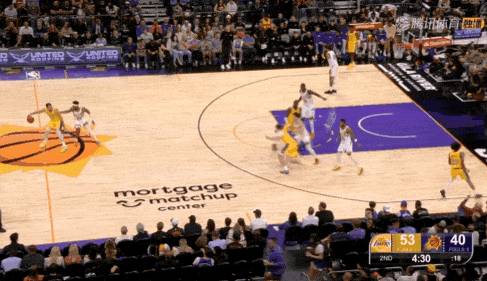
Ayton first gave Laravia Do "Flare" and then play a pick-and-roll with Luka. Luka used a prison dribble to trap Goodwin, who was leading the defense, but he was too deliberate in passing an alley-oop to Ayton - Maluach had already retreated, but Luka still chose to force a lob to Ayton, which was eventually destroyed by the 218cm tall Maruach..
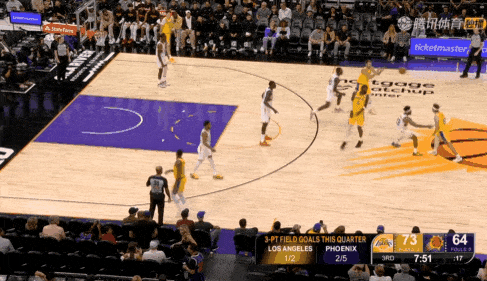
The tactics were exactly the same in the second half - Ayton first played a Flare for Xiaoli and then started a pick-and-roll with Doncic. Luka split the corner, Smart shook off the defending player and broke through, and Maluach had to step forward to cover - this was originally a perfect opportunity to pass the alley-oop, but Ayton was not fully prepared and lost his position after physical contact with the rotating player, and the referee did not whistle for this physical contact.
Although there is still an obvious lack of tacit understanding between the players, when playing this tactic, the opportunities the Lakers players got in this game and the diversity of choices they displayed are still encouraging.
This is not because this tactic is so sophisticated, but because the Lakers do have many players who are very suitable for this tactic - Luka, Reeves, and Ayton need not be mentioned. We have also seen how Laravia and Smart use their air cutting ability, shooting threat, and ball handling ability in the tactic - the Lakers really have many players who can handle the ball and attack at fixed points. When LeBron returns, they will be even stronger.
Let’s continue watching.
"Stack"
stack is considered a classic tactic of the Lakers in recent years. Let's mainly look at the execution of the next preseason.
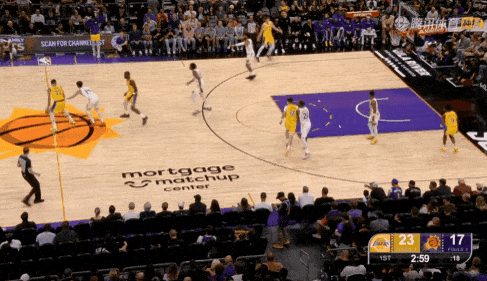
Doncic plays the stack with the ball, and Laravia plays the back screen - Laravia is a large shooter, so the quality of the screen in this round is good, but the Suns' defensive discipline is not good. Ayton is completely empty in this round, and Luka also uses Laravia's screen to get past the upper line defense, so the players in the bottom corner must come over and shrink to help defend (tag) Ayton - so Brownie in the bottom corner gets a big open space.
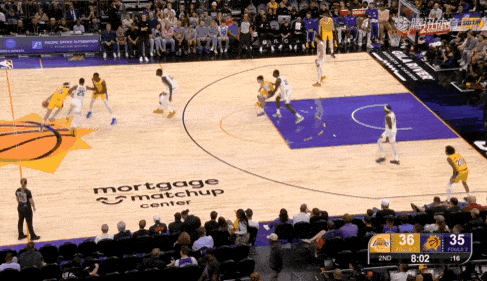
In this round, it was replaced by Reeves holding the ball and playing stack. Laravia once again provided good cover quality. Reeves chose a personal attack and hit a layup.
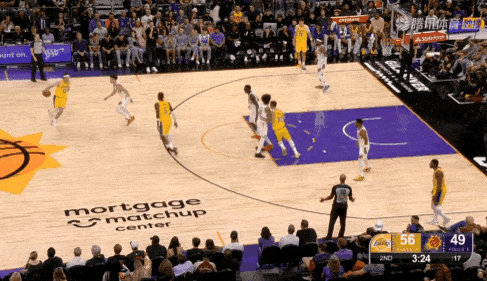
In this round, it was replaced by Luka as a back screen cutout. The opponent predicted the tactics and did not take the screen, but Ayton's opponent had to guard (Ayton is a vertical threat player, and Reeves also has a good ball shooting ability), so their big man had to give up double-teaming Reeves and left from a good defensive line - Reeves made a one-on-one emergency stop shot.
In addition, the other two players who used back screens to cut out in stack tactics in the preseason are Vincent and Reeves:
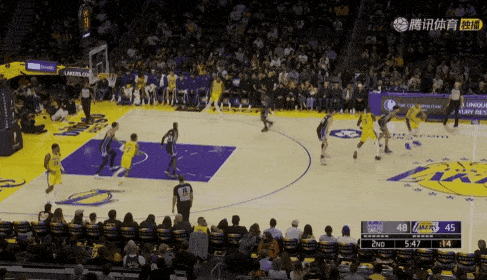
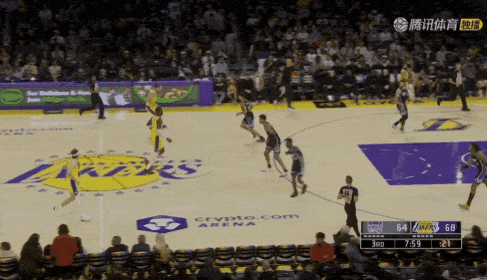
When dismantling the above stack rounds, I had a question - we all know that in stack tactics, larger players have better screen quality, and at the same time, this player needs to have the ability to shoot three-pointers at the top of the key. So why Laravia and not Rui Hachimura?
I soon figured it out - it was the ability to handle the ball.
Hachimura may be a better screener and shooter, but he can only be used as an end point at the top of the arc - you cannot allow him to take decisive shots, which will make him hesitate, but allowing him to take decisive shots will weaken the subsequent development ability of this tactic and make this tactic a "one-shot deal" - This will mean that people outside this tactic, such as Reeves and LeBron, can only become spectators.
This is what the Lakers don't want to see.
And this idea also exists in all the Lakers' tactics.
"Double Drag"
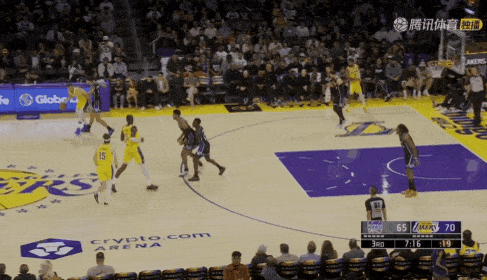
After a double screen, Reeves flicked out and Ayton made a pass - Luka was flanked and passed Ayton with a jump pass. Ayton read and helped defend the ball. Hachimura moved again. After continuous transmission from the outside, Reeves attacked and closed out the ball and Hachimura hit a three-pointer - this should be the kind of round the Lakers like to see the most.
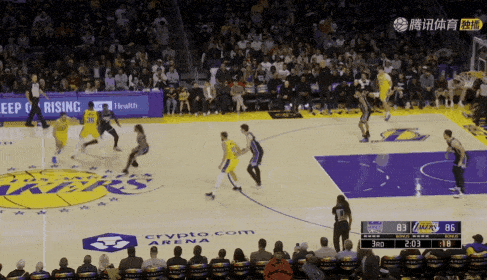
Smart and Kleber set up a double screen with a wide distance. Luka was still switched and briefly double-teamed. He directly swung across a wide range to find the opposite corner. Laravia's signature fixed-point breakthrough attack then dominated the ball - passing Smart, and once again attacked the close out and hit the mid-range shot.
"Pistol"
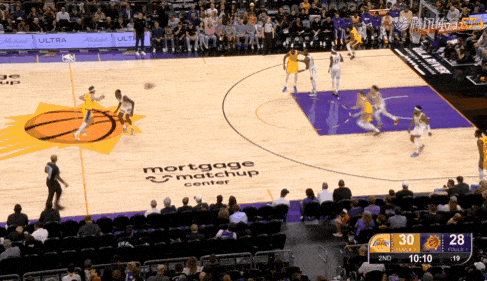
pistol+flare, Reeves can break through like this round, can separate shooters, and the center can also go down after covering the shooter - you also know at a glance that this tactic will be very suitable for many players to be included.
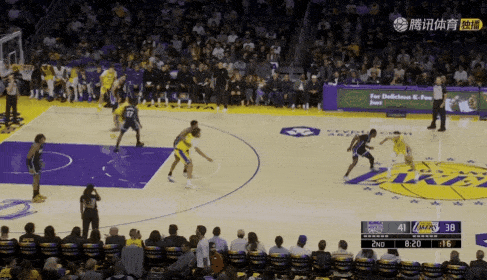
In the same tactic, after switching to Vincent to do the handoff, he ran the flare to catch the ball. After controlling the ball for the second time, Hayes passed the ball smoothly - the most perfect combination as expected. Integrate the threat of holding the ball, the advantage of multi-control, and the threat of downsizing into one round.
"Chicago"
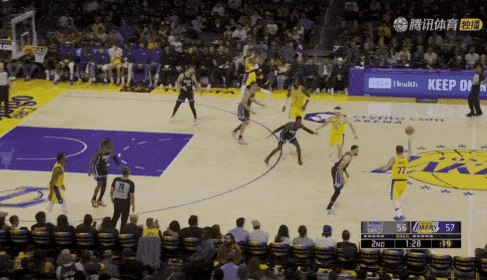
is similar to the idea of "double drag" above. Double screens increase the spacing, and one player slides down and one player bounces out. If the opponent does not have a strong unlimited defense or squeeze screen, it is easy to make mistakes in selection. If you want to double-team Luka like this round, it will create a local situation of overplaying and underplaying.
Ayton showed a very good ball-handling IQ in the preseason. He handled the ball twice and hit an open Hachimura three-pointer.
"Zipper+Flare"
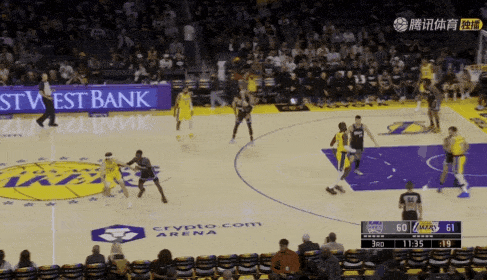
Ayton sets a screen for Luka to "Zipper" the ball, and then immediately turns around to give Reeves a flare after passing the ball. Screen - dual core + Ayton, once again integrated into one tactic. Luka can attack and pass to Xiaoli. Both of them can find opportunities to find Ayton. At the same time, pay attention to the weak side also performing a cross screen, which proves that the weak side is also designed to be one of the points of opportunity.
Although pick-and-rolls are always king for Luka's team, the Lakers have been trying to utilize all their weapons. I think this is a correct idea.
In addition, the first alley-oop between Ayton and Luka also came from the "zipper" tactic:
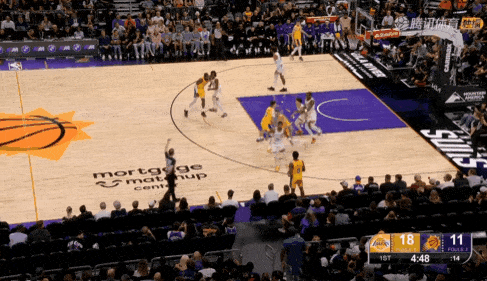
This time it was a sideline ball, and it was Laravia who set the screen for Luka. After Luka cut out, Ayton immediately stepped forward to pick and roll. The double screen completely took away the defender. Luka's change of rhythm attracted the two people and assisted Ayton in the alley-oop.
"STS"
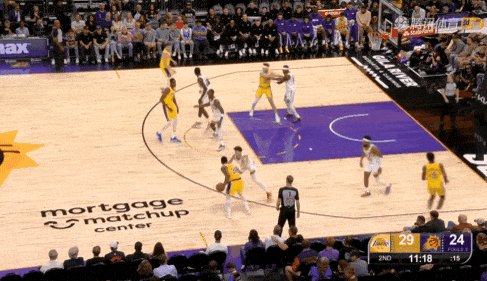
"STS" - Cover the player who has finished the screen. Smart "deals" the card at 45 degrees. Reeves on the weak side first screened Knecht, allowing Knecht to cut in. Then he used Klock to cover the outside cut, and then hit the pick-and-roll, causing a foul. This is also a tactic that combines multiple threats.
"Wedge"
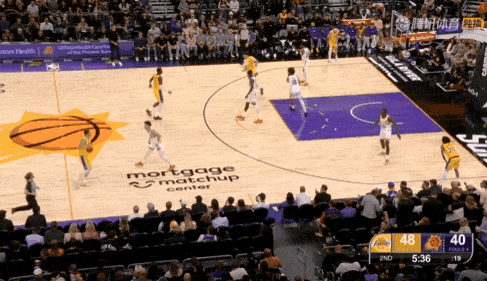
A lot of tactics were used at the beginning of last season, and they can still be used this season. When recording this round, the first thing I was thinking about was why Ayton screened Laravia, instead of Laravia covering Ayton. I think it was for that reason. Laravia became the person who ultimately screened Luka, so he had more choices and handled the ball better.
In this round, we can also see that after Ayton screened Laravia, he did not immediately follow up, but also made a screen for Luka - so this tactic is actually "Wedge+double drag". The real opportunity lies in the double drag: Luka attracted Maluachi to move higher up, and Ayton gained a positional advantage by going downhill, so he attracted the shrinking help defense in the bottom corner. Luka found Nico Smith who was open in the bottom corner and hit a three-pointer.
Question
As we can see, the pick-and-roll-based tactics set up by the Lakers in the preseason are still very rich and thoughtful - this is in line with the impression Redick left us before: he likes something more diverse, more modern, and with more upper limit of imagination, rather than just giving it directly. (Just like his transformation of Davis last season)
But it is more "complex", which means it requires more running-in and tacit understanding.
Although I do not doubt that the Lakers have such player intelligence and potential, some hidden worries that they unexpectedly exposed in some "basic parts" in the preseason are worthy of our attention at the beginning of the regular season - for example, after 6 preseason games and many training games, Reeves and Doncic still haven't figured out how to feed Ayton.
In the preseason, DeAndre Ayton played in 5 games, averaging 24.2 minutes per game, but only 8.8 points, especially in the alley-oop, which was only successful once in two games.
Being more involved in handling the ball cannot be an excuse for his decline in scoring - he clearly lacks a tacit understanding with Luka Xiaori (of course this is not just his problem). We have already seen the two rounds above, and then we will review some rounds:
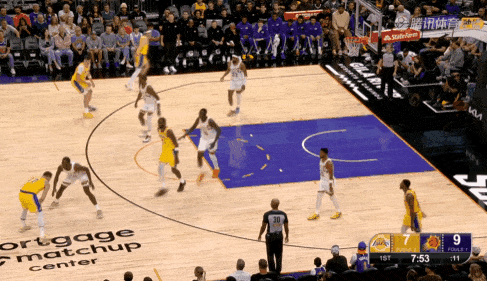
After the pick-and-roll, Ayton chose a back turn. The speed of the back turn will be slower than the front turn, and the angle and method of receiving the ball will be different, but Luka and Ayton There was no good understanding - the short pick-and-roll window was fleeting. Luka slowed down to wait for him, but in the end he didn't wait for the window where he felt he could pass the ball. In the end, he could only pick him up and draw a foul;
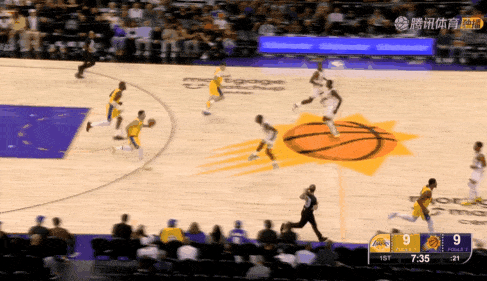
Conversion The two-on-one coordination in the offense requires no cover. Luka, who is more agile this year, has used the dribble to get rid of the defense and attract Maluach's help. The moment Maluach left the center, a short passing window appeared. But Luka released the ball, and Ayton ran too fast this time and passed the receiving position. He almost made a mistake and was finally recovered by Xiaoli. (But then another ugly basket was blocked by Red Deer, but luckily he made up for it in the end)
Looking at this round and the above round together, one is slower and the other is faster. It is obvious that there is a lack of tacit understanding.
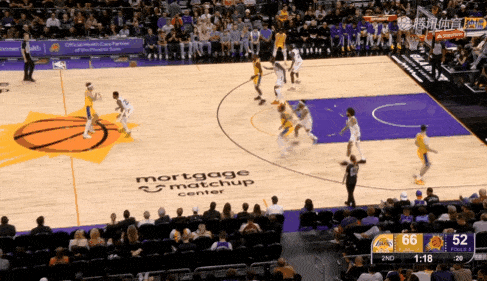
In the next round, Ayton used the "Hawk" tactic of first covering Xiaoli, then covering Luka + downswing - in this round, I personally felt that Luka's alley-oop was already very good, but Ayton inexplicably missed the receiving window.
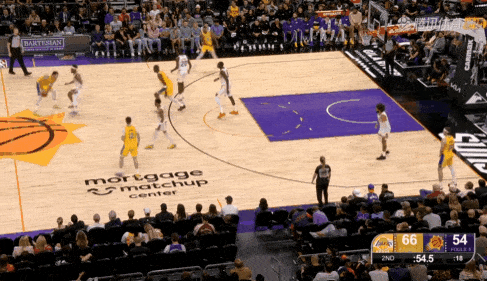
Next is a Gortat screen - Luka's favorite tactic. But we can also clearly see the problem: Although the quality of Ayton's first screen was good, and he did perform Gortat's screen action - but he was a little slower.
What he does is more like a Gortat screen for fast defenders - by default the defender can pass the opponent with speed, he only needs to block the frame protector - but Luka likes the center to go down faster when Gortat screens, directly helping him "clear a route".
Of course, you can also say that this round is a matter of Luka’s own choice. But anyway, there is a lack of tacit understanding.
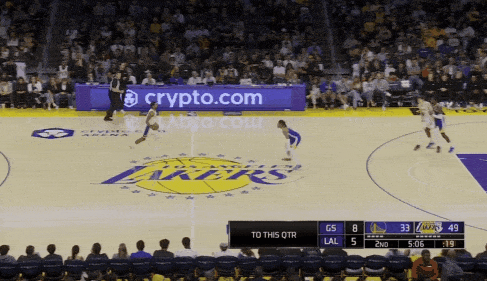
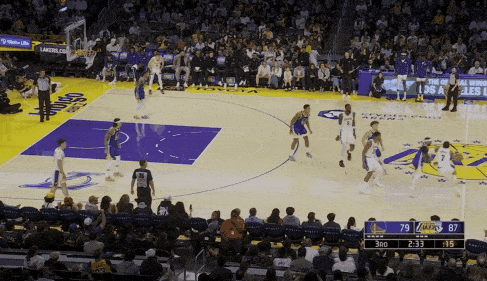
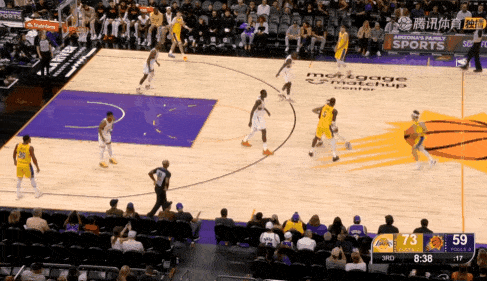
Not to mention when replaced by other players such as Reeves - their level of passing lobs is not high to begin with, and there is no tacit understanding. In the first few games without Luka, Ayton completely became the "quintessential human alley-oop failure."
Although in some games, the Lakers' ball handlers used short pick-and-rolls to partially solve this problem, short pick-and-rolls are essentially a way to forcefully increase Ayton's production at the expense of efficiency. When Luka is not on the court, it is okay to attack in this way, but when Luka is on the court, the efficiency of short pick-and-rolls is not enough compared to Luka holding the ball himself. (For players of Luka's level, short pick-and-rolls actually weaken their threat in the middle)
And in the preseason finale against the Kings, this problem was still unresolved:
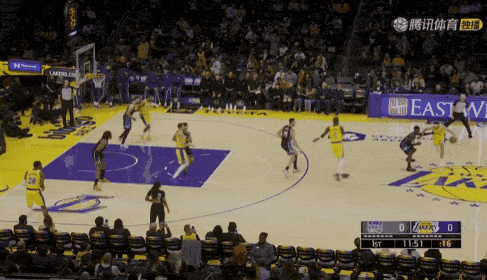
The Lakers' opening tactics designed an off-ball version of the "stack" for Ayton, with Luka's elbow supporting him. Ayton used Vincent's back screen to cut into the alley-oop - but even if the tactical intention was achieved in this round (the opponent was smaller and changed defense), he still could not complete the alley-oop.
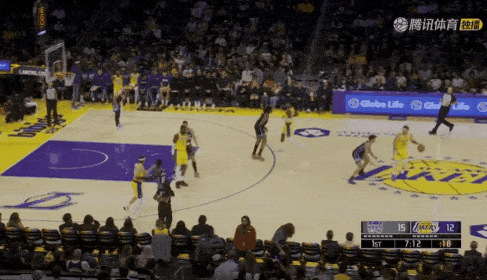
This round is a question of the passer - through Iverson + baseline cross screen, Ayton has already got a perfect chance to catch the ball under the basket - but Smart, who is responsible for dealing cards, missed the pass. (In the end, this round became a Hachimura singles)
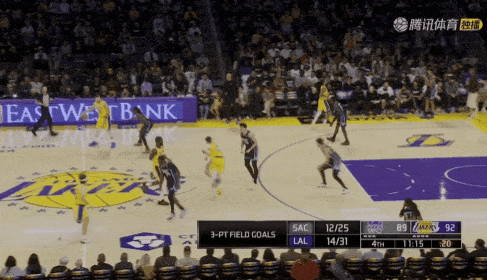
Luka also made a ground pass error with Ayton who did not understand each other again in the double drag..
Without going into too much detail, let’s take a look at some of the defensive highlights and problems that emerged in the preseason.
Because the preseason personnel are not uniform and the defensive system is still in the early stages of running-in, I will not over-interpret it. This part only selects two observation points that I think are important to present, which are:
Advantages: the positive impact of Smart's defense business;
Disadvantages, Ayton's positional sense and the ability to balance one defense and two problems;
Let's look at the advantages first.
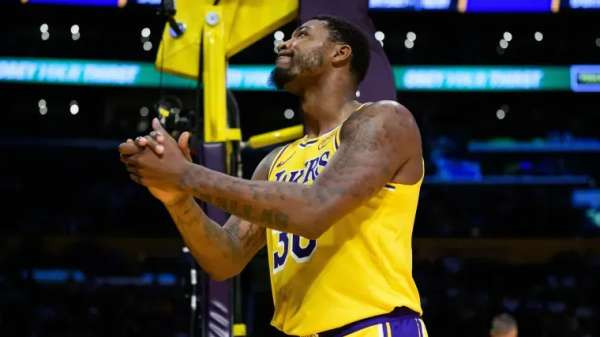
Smart's defensive quotient
Everyone knows that Smart's foot speed has deteriorated slightly compared to his peak period, but he is still a good individual defender and leader. There are good and bad individual defense rounds, so I won't show them. Overall, he is still a pretty positive defender.
From the first day the Lakers signed him, my biggest expectation for him is to become a leader and glue on the defensive end, using his defensive IQ, communicating and commanding, and doing various little things to increase the overall defense.
In the preseason, he met my expectations in this regard.
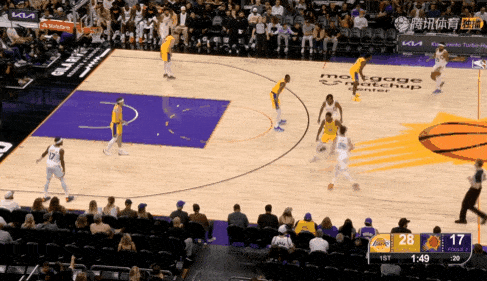
In this round, the Lakers destroyed the Suns' stack. Who was the hero? It's Smart.
Brownie had already caught the screen out of position during the screen. He was a little confused about what he should do and was still trying to make an impossible return. Smart immediately pointed to the back of the player who was covering the ball to signal him to change defense. At the same time, he took over Goodwin, who was holding the ball in the pick-and-roll. Successfully resolved a defensive crisis.
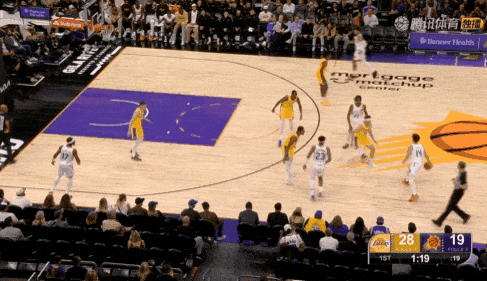
Reeves showed signs of being out of position when fighting the re-screen (reset screen), and Smart immediately came up to flank him - this was absolutely the right choice. The Suns' ball handler in the preseason was not strong enough to play the ball, and Smart's opponent was Goodwin. Sure enough, the Suns guard in possession of the ball was unable to complete a more advanced skip pass (skip the target of a pass and go directly to the farther end), and this time was completely enough for Smart to complete the return X-out - unfortunately, Knecht fouled, and Smart immediately began to coach him after the foul.
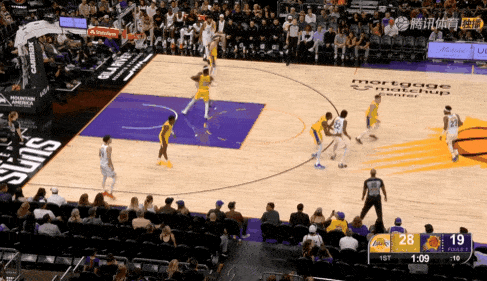
Then in the next round, when defending the stack screen, Smart and Knecht had good communication - players like Smart can continuously improve the defensive habits of the team, especially the team's young people, during the long season, which is a very valuable asset.
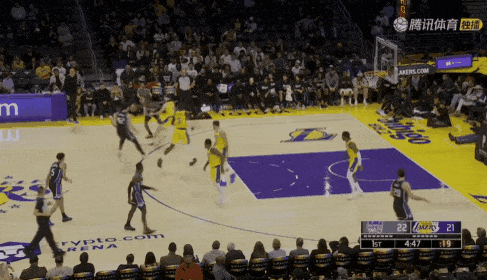
In the game against the Kings, Luka's close out was attacked, but Smart provided high-quality card assistance on the wing. Successfully sabotaged the opponent's breakthrough.
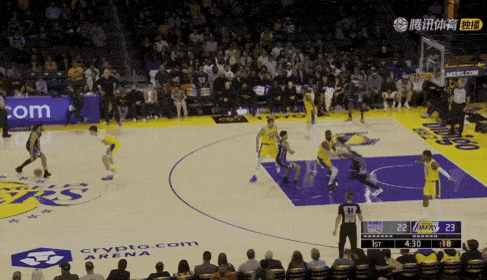
The Kings played ram+stack. Doncic made a defensive communication error and missed the shooter who had no choice but to let go. But Smart on the weak side had already saved like a cannonball and made up for the defensive mistake with a perfect distance control. In this round, Smart was doing something completely beyond his responsibility, but this is where his value lies.
This is also Smart's best defensive round in the preseason, in my opinion. (Better than all his single-defense highlights)
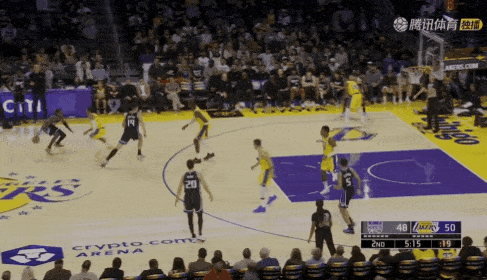
After the King pindown, the center faked a handoff and used LaVine's reverse back block to try to attack the frame - Smart directly predicted it in advance and positioned himself in advance, causing the center to commit an offensive foul.
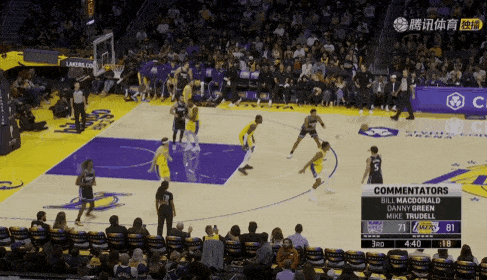
In this round, he first squeezed through the screen to defend against the shooter who cut out - the shooter ran back and hit Ricky. Smart realized that he was out of position and immediately directed a defense change. Hachimura understood. The action on the strong side was completely prevented, and in the end, after the opponent shot, Smart immediately cut into the basket to grab the rebound, which was also an example he could set for the Lakers players.
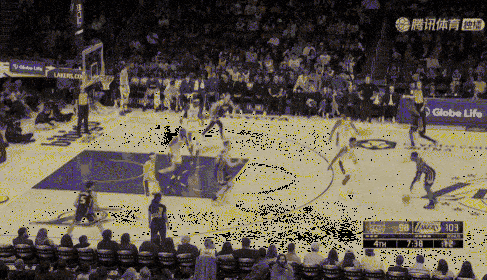
The Kings played pistol+DHO. Smart continuously directed defense changes and squeezed through the screen at the right time. One person clearly sorted out the Lakers' defense on the line, and finally formed a team to defend well-the fast-legged individual who squeezed through the screen was of course important, but the experienced commander who did not suffer any loss in legs and feet was equally critical. (For example, for the Lakers in 2020, Rondo LeBron will assume the role of Smart, and Caruso-Pope will assume the role of "young fast legs")
All in all, I am personally very satisfied with Smart's performance in the preseason - I hope he can handle the "sub-health" of Achilles tendonitis. As I wrote when he signed, this was a surprising and crucial signing, and it was great to get him.
Ayton's positioning problem
Ayton's evaluation is more complicated than Smart. First of all, the importance of the center in the man-marking system is greater than that of the defender. He represents the upper limit of the entire defensive system-and in the preseason, although Ayton's enthusiasm for protecting the frame has improved somewhat, some instinctive problems are still frequently exposed.
First of all, let’s praise Ayton’s enthusiasm and size:
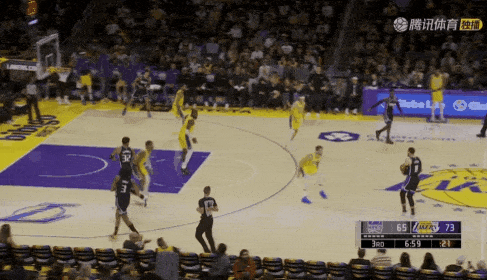
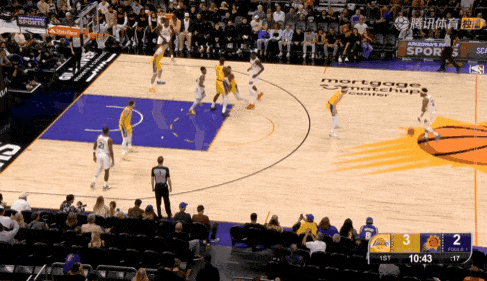
In the preseason, Ayton’s desire to interfere with shots has increased significantly. Although there is a lack of detailed data in the preseason, we can still see this from some basic data. In the preseason, Ayton averaged 1.8 blocks per game, a huge increase from his career average of 1.0 blocks per game - and this was only 24 minutes of data.
In the pre-season interview, Ayton vowed: "I want to prove to the team that I invest more in the defensive end than the offensive end. As I have always said, I am not here for data. Whatever the Lakers need me to do, I will do it. My first task is to protect the basket and end the opponent's offensive rounds. . To be honest, it feels great to block shots and serve as the defensive pillar, and I also enjoy the response from my teammates."
"I have to work hard to shoulder this responsibility and let the world and the entire league know that I am the center of the Lakers and the defensive pillar of this team."
He is indeed more than just empty words. Obviously, the talent level of his opponents in the preseason is lower, which also amplifies his size advantage when protecting the frame from the front..
But even though Ayton has been very active, there are still some hidden worries:
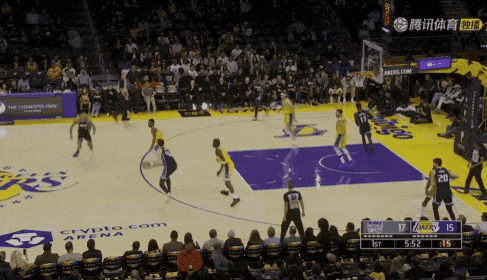
He is not good at making judgments when protecting the frame, and it is difficult to take care of one defense and two defenses. In other words, his ability to "cover" for his teammates has a clear upper limit.
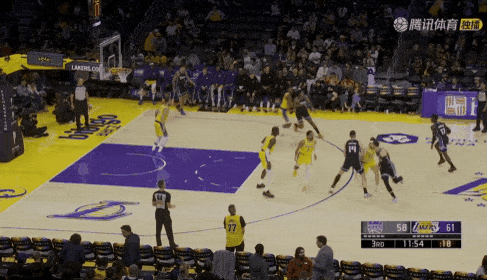
Just like this round, Ayton can often only take care of the first person in front of him. Although he is 7 feet tall, his coverage ability at the basket is relatively poor, and his reactions are more "instinctive", making it difficult to take care of one defense and two defenses.
In the game against the Suns, he was ridden in the face by Maluachi many times:
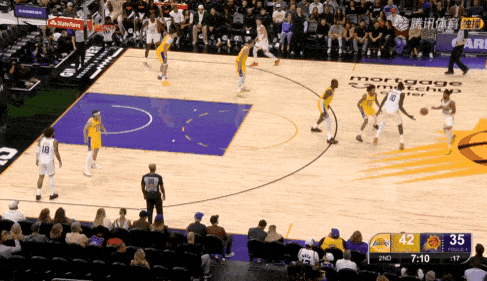
A typical case of not having a good positional sense when defending pick-and-rolls.
He is less able to accurately judge the intention of the ball holder and relies on position selection to take care of one defense and two defenses. If he determines that the ball defense on the upper line needs his help, he basically can no longer take care of the lower line man. This means that while providing protection, he also needs more protection from the bottom line help defender than the top rim-protecting inside line.
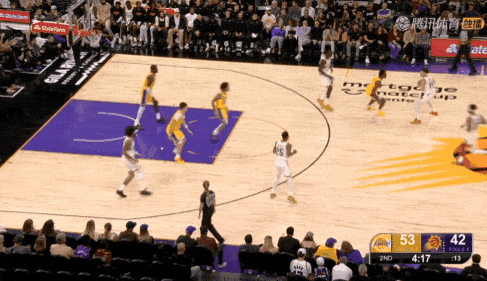
Sometimes he is easily shaken by the ball carrier when trying to block a shot, causing him to lose the defensive position behind him.
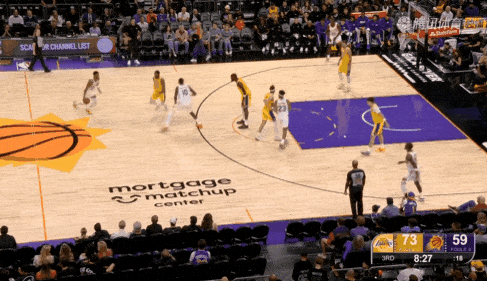
Once the attention is focused on the player holding the ball, and then turning around to find the next player, it is often difficult to find the starting point and frame protection position.
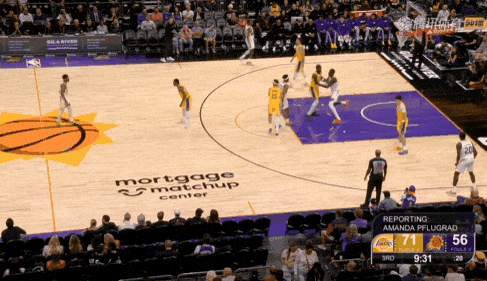
also relies on screens and has average defense. After being caught by RAM in this round, there was no communication and command, resulting in a wide open three-pointer for the opponent.
The feeling that Ayton gives me is not that he cannot protect the frame, but that his defensive quotient and habits are indeed not the traditional "center center defensive core" who can handle everything by one person - he can protect the frame, but he also very much needs a certain resistance on the line, needs a baseline helper to help the helper, and sometimes needs instructions/reminders from others. (However, his communication was much better when he was in the Suns. Maybe it was due to some unfamiliarity?)
So when did he perform best?
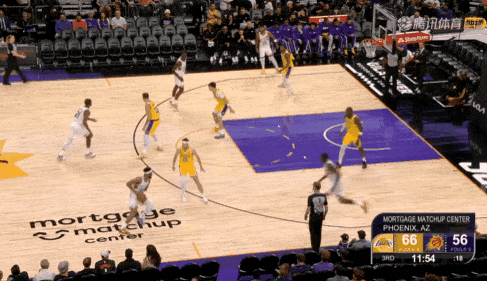
has not been completely passed on the line - he can directly recover without having to worry about one defense and two. At this time, it will not be easy for Maluachi to alley-oop over his head. (Laravia also provided certain protection in this round)
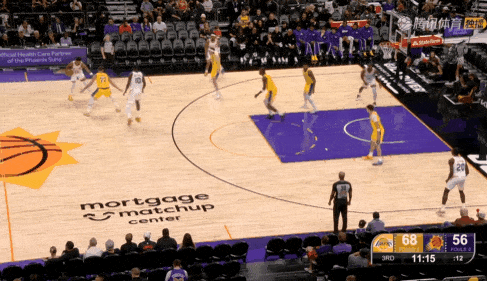
When Ayton retreats to defend the pick-and-roll ball holder, if the leading defensive player can block the route of the center forward in time, and at the same time the baseline help defender is active The tag shrinks - Ayton's overall pick-and-roll defense will appear much better - because he is actually a center with pretty good mobility, not a wooden stake sinker. It is not easy for the pick-and-roll ball holder to pass him in a short distance.
The Lakers' overall rotation in this round was also very good.
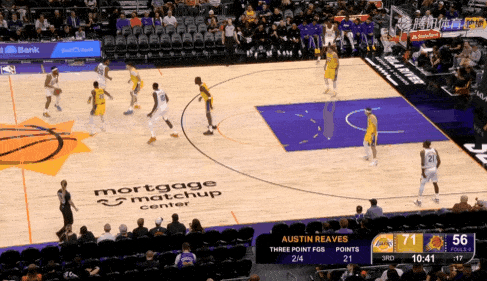
Smart showed a very good habit after being caught by the screen, and blocked Maluac's downward route. The untimely cut of Suns from the bottom line also brought Doncic to the assist defense position, further compressing Maluac's alley-oop space - Ayton and the intruding ball carrier were 1v1, directly blocking the opponent.
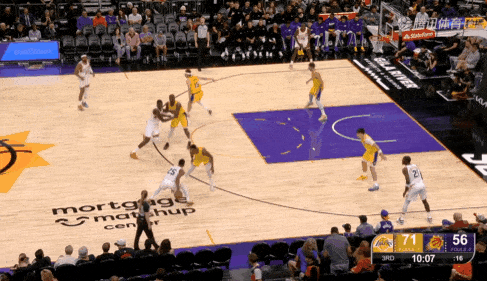
Can't Ayton execute the delay? In fact, as a fan who watched him during his time with the Suns, in my impression he is a center who is quite agile and can execute a lot of delays - I was deeply impressed by the many rounds he delayed Curry back then - but Ayton's delays undoubtedly require the help of high-quality baseline defense.
Of course, no insider can really delay without relying on the bottom line to help defend.
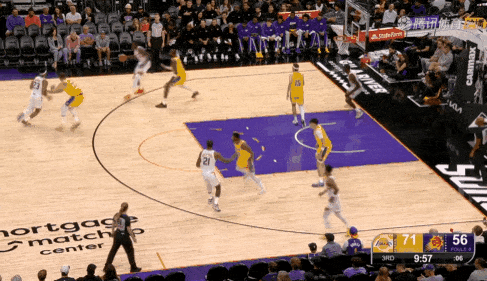
Ayton Smart once again defended a wonderful round-as long as the defender is difficult enough, Ayton has the athletic ability and talent to provide some interference protection.
In short, through the preseason games, we can see that Ayton's desire to interfere with shooting has significantly increased. This thing has two sides - on the one hand, Ayton's increased enthusiasm and frequency of protecting the frame are definitely better than when he had low subjective initiative and sometimes gave up protecting the frame; but on the other hand, it can be seen that despite his increased enthusiasm, Ayton is still a player with low defense and poor instincts:
Stronger desire to interfere with shooting. Sometimes it will magnify the problem of his positional sense and make him miss more behind. The team needs to realize this faster than the opponent and provide him with more specific and stable help in order to form a "mutual benefit" with Ayton. Otherwise, frequent attention to one thing and the other may cause Ayton to hesitate or even collapse.
(As for whether it can be done, I can only say that it must be done as much as possible. The upper limit of ability is the upper limit of ability, but the layout must be clear and correct - this will definitely help the team. The remaining "capacity limit" part depends on how competitive the other aspects can be combined to achieve and whether the team has the courage to do so. Strength/luck to increase the upper limit of ability)
The Lakers are ultimately a team with poor defensive talent and many defensive weaknesses this season. It is difficult for them to solve everything with the ability of a single player, which means they need more help defense, and they also need to figure out how to help defense, how to rotate, and how to Help. the helper.
This is largely related to tacit understanding and discipline, but discipline and tacit understanding cannot be formed in a short time-especially considering that this is a team with many newcomers and young players.
They probably won't be very good defensively early in the season, but I expect that if they have enough momentum and are making the right connections, their defense will get better and better as the season goes on - just like Slovenia did at the Euros.
The Lakers in the new season are actually very similar to Slovenia in the European Championships - they do not have enough top-notch defensive talents, but they have players who are willing to invest in defense, have a certain size, and have veterans who can serve as leaders on the defensive end, emphasize discipline, and inject toughness and unity genes.
And the words I gave to the Slovenia team in the European Championship analysis are also given to them now - what the famous coach Bob Knight said:
"Defense all about helping".
When the Lakers figure out how to help each other, they will become a competent defensive team..
(As for retreat defense and zone defense, these two tests are more tacit understanding. The Lakers could not even complete the preseason, so we will not analyze it with small sample data here. We will leave it to later)
Summary
For the Los Angeles Lakers, this may be the most exciting and unpredictable season since 2021 - the interweaving of various stories has woven into an intersection with countless forked roads that may lead to different futures.
Where will they go in the end?
The new season has begun, let us wait and see.
Mini-game recommendations:What a LegRelated Posts
NBA regular season, the Knicks narrowly defeated the Cavaliers, but the two teams are still far from competing for the championship.
BasketballThe 25-26 NBA regular season continues. The Knicks face the Cavaliers at home. The game can be said to have ups and downs. After the first half, the Knicks led the Cavaliers by 15 points. In the third quarter, Mitchell scored 21 points in a single q...
moreYang Hansen scored 2 points against Gobert in his debut, but was abandoned in the second half. Edwards scored 41 points.
BasketballThe NBA regular season is here, the Trail Blazers will face the Timberwolves at home in their first game, and Yang Hansen will make his regular season debut. Edwards started the game, and Yang Hansen's former mentor Liu Weiwei watched the game....
moreIn-depth interpretation of the Lakers offense and defense in the new season: operational analysis, tactical collection& advantages and disadvantages
BasketballHave the Lakers gotten better? What kind of game shape are they likely to take? What should we expect from them in the new season? Foreword For the first time in five years, the Lakers will start the new season without LeBron James or Anthony Davis...
more
Hot Posts
- Last season, averaged 9.7 points and 2.2 rebounds! Jersey Reporter: Coffey wore No. 17 jersey in the Bucks
- 18 years of the showdown in the league to looking up to the new king, the legend continues
- Durant himself never thought he could enjoy super high treatment in his life, but he came to the right place!
- The park championship has no value? American News: The Lakers have better psychological adjustment and beat many stars all the way
- As strong as Jokic is only the No. 41 pick in the second round in 2014. Who are the top five in the same class? Tanhua became an MVP
- Well-known reporter: The Lakers center may get a contract of 5.2 million, but he may still stay with the Lakers
- The logo of the NBA tough guy: Kobe s Achilles tendon, Rose s knees, Green s heart
- Top Ten Wicked People in NBA History: Dream Chasing Green is on the list, and there is no dispute!
- A wise man will make a mistake. James counts the 20-year trend of the league, but he has not counted these 5 things
- Three-point shooting percentage is 48.2%, top 3D with an average of 14+6 per game, and only 33 million yuan. Do you regret it, Celtics?
Recent Posts
-
Losing and losing, one person s confidence is gone, but fortunately there are 2 gains left, so I will continue to reuse the next game
-
Meiji: 76ers may choose VJ Edgecomb with the Tanhua lottery. The players impressed the senior management
-
Do you still remember the Rockets starter 4 years ago? The four have completely faded out of the NBA, and only one person is still pursuing their dreams
-
Analysis of the Clippers lineup next season: A bunch of veterans, the only way to win the championship is to lose. It is not illegal but immoral
-
The Clippers 13-minute miracle in life and death: Batum is ordered to rewrite the fate of the series
-
Mitchell scored 48 points at home, second highest in the team s playoffs, second only to James 49 points
-
The inside line is in a hurry! Guangdong s "new center" will be promoted by Guo Shiqiang, which is Du Feng s trump card for the championship
-
Finals G3 outpost! Halliburton ordered, Carlisle made a tough request, Turner accepted it calmly
-
American News: Lopez is likely to leave the team this summer, and the Bucks may leave Kevin Porter Jr.
-
The decline in attention is difficult to control, the league strives to win the super giant but is powerless! Zhan Ku has no successor